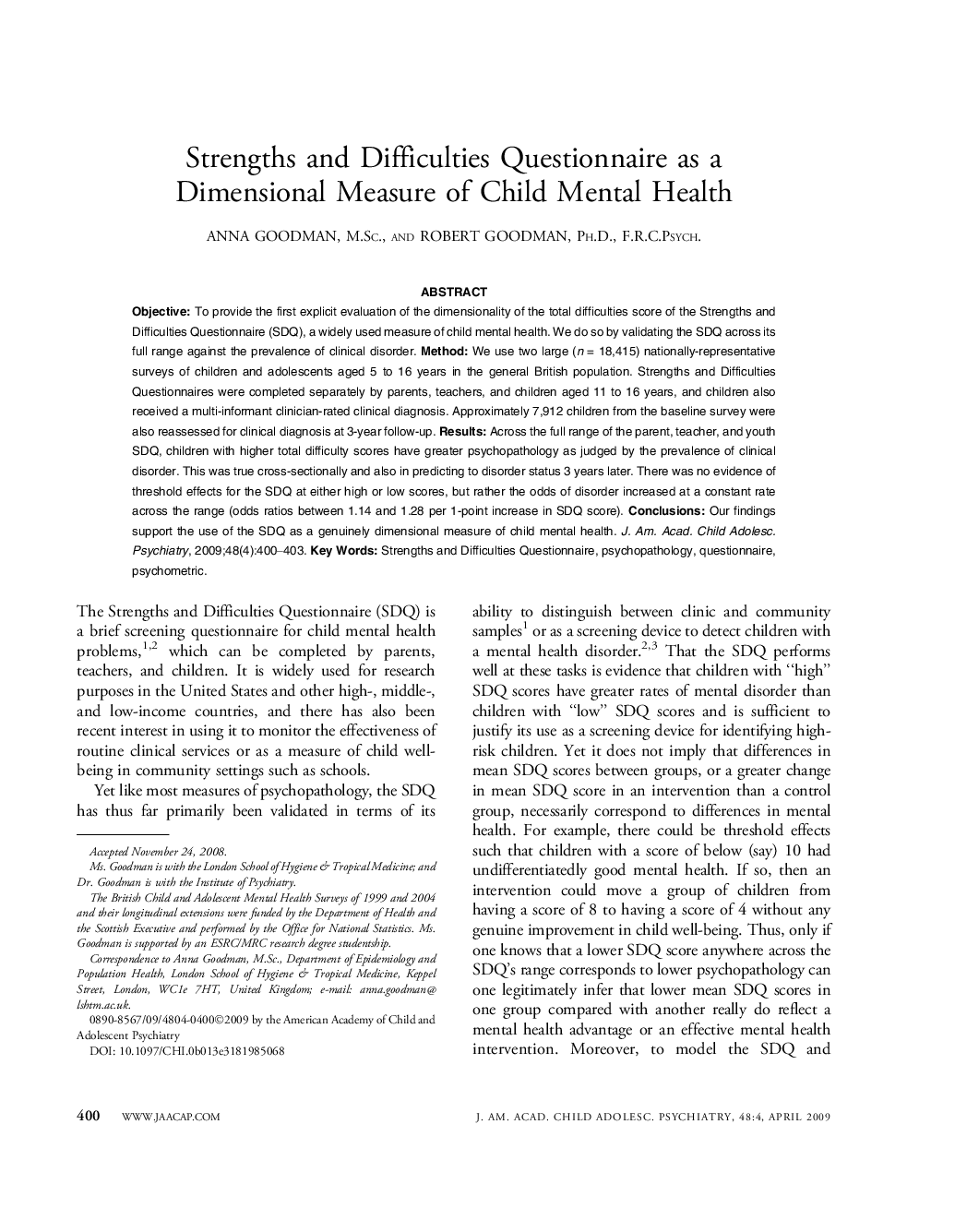| Article ID | Journal | Published Year | Pages | File Type |
|---|---|---|---|---|
| 325897 | Journal of the American Academy of Child & Adolescent Psychiatry | 2009 | 4 Pages |
ObjectiveTo provide the first explicit evaluation of the dimensionality of the total difficulties score of the Strengths and Difficulties Questionnaire (SDQ), a widely used measure of child mental health. We do so by validating the SDQ across its full range against the prevalence of clinical disorder.MethodWe use two large (n = 18,415) nationally-representative surveys of children and adolescents aged 5 to 16 years in the general British population. Strengths and Difficulties Questionnaires were completed separately by parents, teachers, and children aged 11 to 16 years, and children also received a multi-informant clinician-rated clinical diagnosis. Approximately 7,912 children from the baseline survey were also reassessed for clinical diagnosis at 3-year follow-up.ResultsAcross the full range of the parent, teacher, and youth SDQ, children with higher total difficulty scores have greater psychopathology as judged by the prevalence of clinical disorder. This was true cross-sectionally and also in predicting to disorder status 3 years later. There was no evidence of threshold effects for the SDQ at either high or low scores, but rather the odds of disorder increased at a constant rate across the range (odds ratios between 1.14 and 1.28 per 1-point increase in SDQ score).ConclusionsOur findings support the use of the SDQ as a genuinely dimensional measure of child mental health.
